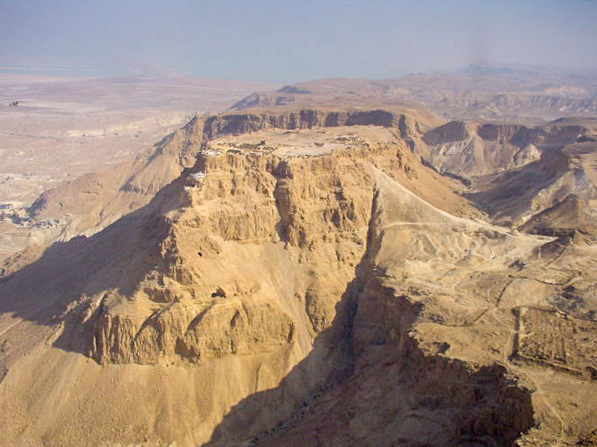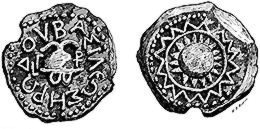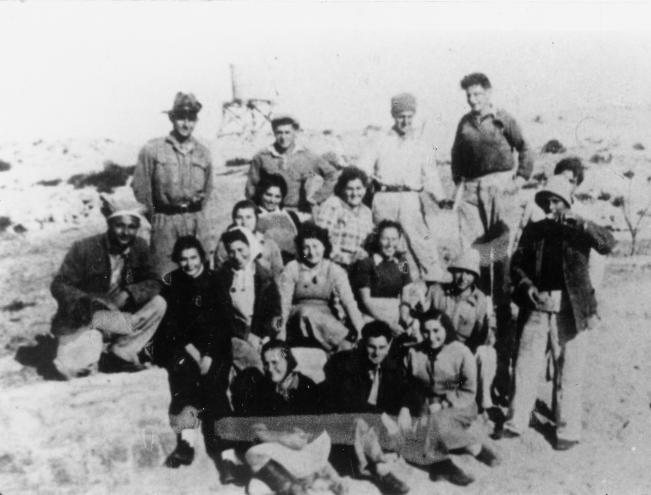|
Caesarea
Caesarea () ( he, קֵיסָרְיָה, ), ''Keysariya'' or ''Qesarya'', often simplified to Keisarya, and Qaysaria, is an affluent town in north-central Israel, which inherits its name and much of its territory from the ancient city of Caesarea Maritima ( el, Καισάρεια). Located midway between Tel Aviv and Haifa on the coastal plain near the city of Hadera, it falls under the jurisdiction of Hof HaCarmel Regional Council. With a population of , it is the only Israeli locality managed by a private organization, the Caesarea Development Corporation, and also one of the most populous localities not recognized as a local council. The ancient city of Caesarea Maritima was built by Herod the Great about 25–13 BCE as a major port. It served as an administrative center of the province of Judaea (later named Syria Palaestina) in the Roman Empire, and later as the capital of the Byzantine province of Palaestina Prima. During the Muslim conquest in the 7th century, it was the ... [...More Info...] [...Related Items...] OR: [Wikipedia] [Google] [Baidu] |
Caesarea Maritima
Caesarea Maritima (; Greek: ''Parálios Kaisáreia''), formerly Strato's Tower, also known as Caesarea Palestinae, was an ancient city in the Sharon plain on the coast of the Mediterranean, now in ruins and included in an Israeli national park. For centuries it was a major intellectual hub of the Mediterranean and cultural capital of Palestine. The city and harbour were built under Herod the Great during c. 22–10 or 9 BCE near the site of a former Phoenician naval station known as ''Stratonos pyrgos'' (Στράτωνος πύργος, "Straton's Tower"), probably named after the 4th century BCE king of Sidon, Strato I. It later became the provincial capital of Roman Judea, Roman Syria Palaestina and Byzantine Palaestina Prima provinces. The city was populated throughout the 1st to 6th centuries AD and became an important early centre of Christianity during the Byzantine period. Its importance may have waned starting during the Muslim conquest of 640 in the early Middle Ag ... [...More Info...] [...Related Items...] OR: [Wikipedia] [Google] [Baidu] |
Caesarea Maritima BW 4
Caesarea () ( he, קֵיסָרְיָה, ), ''Keysariya'' or ''Qesarya'', often simplified to Keisarya, and Qaysaria, is an affluent town in north-central Israel, which inherits its name and much of its territory from the ancient city of Caesarea Maritima ( el, Καισάρεια). Located midway between Tel Aviv and Haifa on the Israeli coastal plain, coastal plain near the city of Hadera, it falls under the jurisdiction of Hof HaCarmel Regional Council. With a population of , it is the only Israeli locality managed by a private organization, the Caesarea Development Corporation, and also one of the most populous localities not recognized as a local council (Israel), local council. The ancient city of Caesarea Maritima was built by Herod the Great about 25–13 BCE as a major port. It served as an administrative center of the province of Judaea Province, Judaea (later named Syria Palaestina) in the Roman Empire, and later as the capital of the Byzantine province of Palaestina Pr ... [...More Info...] [...Related Items...] OR: [Wikipedia] [Google] [Baidu] |
Syria Palaestina
Syria Palaestina (literally, "Palestinian Syria";Trevor Bryce, 2009, ''The Routledge Handbook of the Peoples and Places of Ancient Western Asia''Roland de Vaux, 1978, ''The Early History of Israel'', Page 2: "After the revolt of Bar Cochba in 135, the Roman province of Judaea was renamed Palestinian Syria." la, Syria Palaestina ; grc-koi, Συρία ἡ Παλαιστίνη, Syría hē Palaistínē, ) was a Roman province in the Palestine (region), Palestine region between the early 2nd and late 4th centuries AD. It resulted from the merging of the Judaea (Roman province), province of Judaea with Galilee, in 132 AD, into an enlarged province named "Syria Palaestina". Its capital was Caesarea Maritima. Background Judaea was a Roman province which incorporated the regions of Judea, Samaria, and Idumea, and extended over parts of the former regions of the Hasmonean and Herodian kingdom, Herodian kingdoms of Judea. It was named after Herod Archelaus's Herodian Tetrarchy, Tetrarch ... [...More Info...] [...Related Items...] OR: [Wikipedia] [Google] [Baidu] |
Judaea Province
Judaea ( la, Iudaea ; grc, Ἰουδαία, translit=Ioudaíā ) was a Roman province which incorporated the regions of Judea, Samaria, and Idumea from 6 CE, extending over parts of the former regions of the Hasmonean and Herodian kingdoms of Judea. The name "Judaea", like Judea, was derived from the Iron Age Kingdom of Judah, but the Roman province encompassed a much larger territory. With the transition to full Roman province, Judaea became subject to direct Roman rule, replacing a system of semi-autonomous vassalage that had existed since the Roman Republic conquest of the region in 63 BCE. The change was enacted by the Roman emperor Augustus after an appeal by the populace against the ill rule of Herod Archelaus. With the onset of direct rule, the official census instituted by Publius Sulpicius Quirinius, the governor of Roman Syria, nevertheless caused tensions and led to an uprising by Judas of Galilee. In other notable events in the period, the crucifixion of Jesus in ... [...More Info...] [...Related Items...] OR: [Wikipedia] [Google] [Baidu] |
National Parks And Nature Reserves Of Israel
National parks of Israel are declared historic sites or nature reserves, which are mostly operated and maintained by the National Nature and Parks Authority. As of 2015, Israel maintains 81 national parks and more than 400 nature reserves, many of them in the occupied West Bank, that protect 2,500 species of indigenous wild plants, 32 species of fish, 530 species of birds and 100 species of mammals.Where the Golan’s rivers flow into the Sea of Galilee The Times of Israel. Aviva and Shmuel Bar-am. 29/08/15: "As time passed, and with the help of some extraordinary personalities with drive and ambition, the Knesset legislated two official Authorities to deal with our natural heritage: The National Parks Authority and the Nature Reserves Authority. Both began ... [...More Info...] [...Related Items...] OR: [Wikipedia] [Google] [Baidu] |
Palaestina Prima
Palaestina Prima or Palaestina I was a Byzantine province that existed from the late 4th century until the Muslim conquest of the Levant in the 630s, in the region of Palestine. It was temporarily lost to the Sassanid Empire (Persian Empire) in 614, but re-conquered in 628. History The province of Palaestina Prima came into existence in the late 4th century through a series of reforms of the Roman provincial administration which subdivided many provinces into smaller administrative units. The intent of these reforms were to circumscribe the ability of provincial governors with strong garrisons to stage revolts and to improve efficiency by reducing the area controlled by each governor. Provinces were clustered into regional groups called ''dioceses''. Thus, the province of Syria Palaestina and neighboring regions were organized into the provinces ''Palaestina Prima'', ''Palaestina Secunda'', and ''Palaestina Tertia'' or ''Palaestina Salutaris'' (First, Second, and Third Palesti ... [...More Info...] [...Related Items...] OR: [Wikipedia] [Google] [Baidu] |
Herod The Great
Herod I (; ; grc-gre, ; c. 72 – 4 or 1 BCE), also known as Herod the Great, was a Roman Jewish client king of Judea, referred to as the Herodian kingdom. He is known for his colossal building projects throughout Judea, including his renovation of the Second Temple in Jerusalem and the expansion of the Temple Mount towards its north, the enclosure around the Cave of the Patriarchs in Hebron, the construction of the port at Caesarea Maritima, the fortress at Masada, and Herodium. Vital details of his life are recorded in the works of the 1st century CE Roman–Jewish historian Josephus. Herod also appears in the Christian Gospel of Matthew as the ruler of Judea who orders the Massacre of the Innocents at the time of the birth of Jesus, although most Herod biographers do not believe that this event occurred. Despite his successes, including singlehandedly forging a new aristocracy from practically nothing, he has still been criticised by various historians. His reign pola ... [...More Info...] [...Related Items...] OR: [Wikipedia] [Google] [Baidu] |
Bushnak
Bushnak ( ar, بشناق, meaning "Bosnian" or "Bosniak", also transliterated Bushnaq, Boshnak, Bouchenak and Bouchnak) is a surname common among Levantines of Bosniak origin. Those sharing this surname are the descendants of Bosniaks apprehensive of living under Christian rule after the Austro-Hungarian occupation of Bosnia and Herzegovina in 1878, who immigrated to Ottoman Syria. While not originally from one family, most Bosniaks who immigrated to the Levant adopted Bushnak as a common surname, attesting to their origins. Bushnak is also used colloquially among Palestinians to refer to someone who is fair-skinned and good-looking. History Some Bosnian movement to Palestine occurred when Bosniak soldiers were brought to Palestine in the late 1800s to provide reinforcements for the Ottoman army. More substantial movement occurred after 1878, when the Austro-Hungarian empire, ruled by the House of Habsburg, occupied Bosnia. Bosniak emigration continued through this period, escala ... [...More Info...] [...Related Items...] OR: [Wikipedia] [Google] [Baidu] |
Sdot Yam
Sdot Yam ( he, שְׂדוֹת יָם, ''lit.'' Sea Fields) is a kibbutz in the Haifa District of Israel. Located on the shore of the Mediterranean Sea, it falls under the jurisdiction of Hof HaCarmel Regional Council. In it had a population of . It was founded in 1936 and moved to its present site at the southern border of the ancient city and archeological ruins of Caesarea, in 1940. History Northern location (1936–40) Sdot Yam was established in 1936, in the region, just north of Haifa, called the Krayot. It was founded at the urging of David Ben-Gurion during the period when the British were refusing to allow Jews to enter Mandatory Palestine. It was ostensibly based on fishing, but was in reality a base for the Palmach used to smuggle clandestine immigrants, mostly Jewish refugees from Europe, into Palestine. Yossi Harel, famous for being the commander of ''SS Exodus'' and three other such ships, is buried at Sdot Yam. Permanent location (after 1940) In 1940 the kibbutz ... [...More Info...] [...Related Items...] OR: [Wikipedia] [Google] [Baidu] |
Israel
Israel (; he, יִשְׂרָאֵל, ; ar, إِسْرَائِيل, ), officially the State of Israel ( he, מְדִינַת יִשְׂרָאֵל, label=none, translit=Medīnat Yīsrāʾēl; ), is a country in Western Asia. It is situated on the southeastern shore of the Mediterranean Sea and the northern shore of the Red Sea, and shares borders with Lebanon to the north, Syria to the northeast, Jordan to the east, and Egypt to the southwest. Israel also is bordered by the Palestinian territories of the West Bank and the Gaza Strip to the east and west, respectively. Tel Aviv is the economic and technological center of the country, while its seat of government is in its proclaimed capital of Jerusalem, although Israeli sovereignty over East Jerusalem is unrecognized internationally. The land held by present-day Israel witnessed some of the earliest human occupations outside Africa and was among the earliest known sites of agriculture. It was inhabited by the Canaanites ... [...More Info...] [...Related Items...] OR: [Wikipedia] [Google] [Baidu] |
Muslim Conquest Of The Levant
The Muslim conquest of the Levant ( ar, فَتْحُ الشَّام, translit=Feth eş-Şâm), also known as the Rashidun conquest of Syria, occurred in the first half of the 7th century, shortly after the rise of Islam."Syria." Encyclopædia Britannica. 2006. Encyclopædia Britannica Online. 20 October 200Syria – Britannica Online Encyclopedia/ref> As part of the larger military campaign known as the early Muslim conquests, the Levant was brought under the rule of the Rashidun Caliphate and developed into the provincial region of Bilad al-Sham. The presence of Arab Muslim troops on the southern Levantine borders of the Byzantine Empire had occurred during the lifetime of Muhammad, with the Battle of Muʿtah in 629 formally marking the start of the Arab–Byzantine wars. However, the actual conquest did not begin until 634, two years after Muhammad's death. It was led by the first two Rashidun caliphs who succeeded Muhammad: Abu Bakr and Umar ibn al-Khattab. During this time, ... [...More Info...] [...Related Items...] OR: [Wikipedia] [Google] [Baidu] |
Hof HaCarmel Regional Council
Hof HaCarmel Regional Council ( he, מועצה אזורית חוף הכרמל, ''Mo'atza Azorit Hof ha-Karmel'', ''lit.'' Carmel Coast Regional Council) is a regional council located in the northern Israeli coastal plain. The council serves a large area, stretching from Tirat HaCarmel in the north to Caesarea in the south. Its offices are located in Ein Carmel to the south of Haifa. The head of the council is Asif Izek, elected in 2018. Location Straddling the coast of the Mediterranean Sea to the west, the boundaries of the municipal area are: *To the north: Haifa, Tirat HaCarmel and Zevulun Regional Council *To the south: Hadera, Pardes Hanna-Karkur and Menashe Regional Council *To the east: Megiddo and Jezreel Valley regional councils as well as the Wadi Ara settlements. In the centre of the council area are the enclave towns of Binyamina, Zikhron Ya'akov, Fureidis and Jisr az-Zarqa. Communities Hof HaCarmel Regional Council contains many different types of settlements, i ... [...More Info...] [...Related Items...] OR: [Wikipedia] [Google] [Baidu] |





